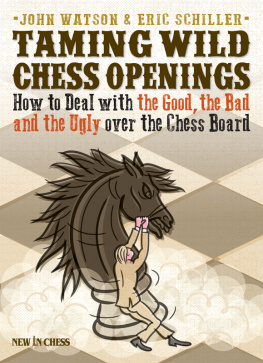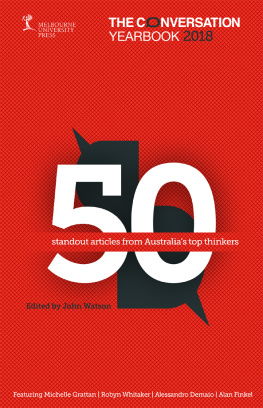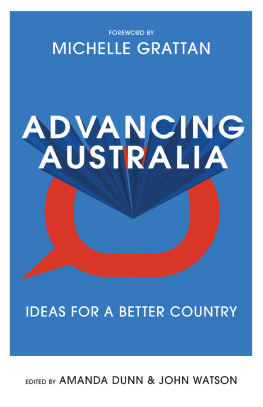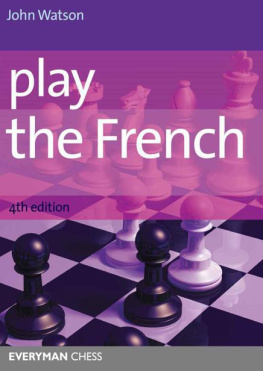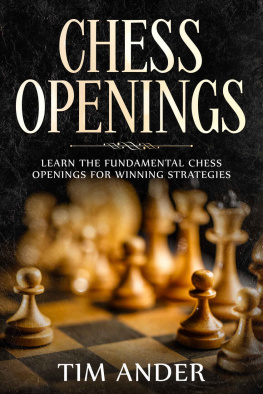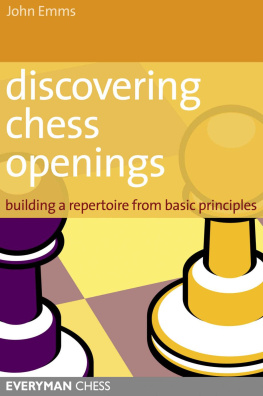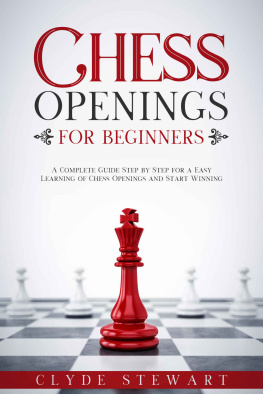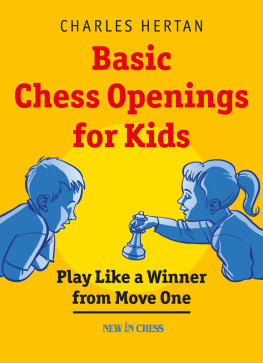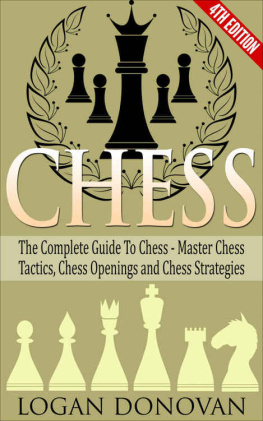Taming Wild Chess Openings
How to deal with the Good, the Bad, and the Ugly over the chess board
By International Master John Watson
& FIDE Master Eric Schiller
New In Chess 2015
Thanks to the Eds for their assistance, Michael for the artwork, and to all the good folks at OConnor Hospital and Wound clinic for taking care of me during the writing of this book. And above all to John for his collaboration, which I have missed for far too long.
Eric Schiller
To my wife Maura.
John Watson
Copyright 2015 by John Watson and Eric Schiller
Proofreading: Edson Kamin and Edward D. Detrick
This book is a revised and expanded edition of the EPlus ebook with the same name.
Cover art by Michael Magnan
Cover design by Eric Schiller
Edited by George Kosinski
Production: Rik Weidema
Corrections: Ren Olthof
Supervision: Peter Boel
ISBN: 978-90-5691-570-4
Explanation of Symbols
The chessboard with its coordinates:
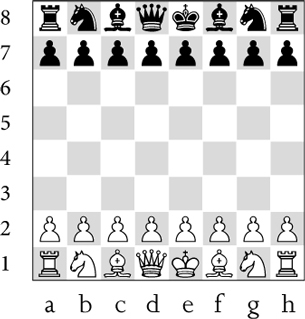

| White to move |

| Black to move |
K | King |
Q | Queen |
R | Rook |
B | Bishop |
N | Knight |

| White stands slightly better |

| Black stands slightly better |

| White stands better |

| Black stands better |
+ | White has a decisive advantage |
+ | Black has a decisive advantage |
= | balanced position |
! | good move |
!! | excellent move |
? | bad move |
?? | blunder |
!? | interesting move |
?! | dubious move |
unclear |
# | mate |
Icons

Thumbs up
Recommended for use in any type of competition.

Thumbs down
We do not feel that this opening can be used successfully in serious competition.

Poison
This opening will seriously damage your position and is considered toxic. Dont play it!

Rabbit
This opening is only good for playing against lower rated competition. It is good for rabbit-bashing and can lead to a quick win, leaving you extra time to rest or prepare for your next game. Or enjoy a pint of your favorite beverage.

Monkey
This opening can be used just for fun (monkeying around) but it is not recommended for your most important games. After all, chess is a game most people play to enjoy; these openings tend to be offbeat and will lead to original and entertaining situations.

Snake
This opening can bite you if you are not properly prepared, so you should study it. It is not likely to succeed against a well-prepared opponent. But there are traps and landmines that must be avoided.

Bomb
This is used on occasion to mark a move that is a blunder.

Check Mark
This opening is sound enough, but perhaps difficult to play well. Whether youll want to use it is a matter of taste.
Introduction
Whats in this book
This book is designed to help the reader find good solutions to rarely-played openings, openings of dubious worth, and openings which dont involve a lot of theory but are still irritating to play against. The authors have been at this for over 30 years, and have written a number of books covering much of the same material. In addition to dozens of our own books, we have co-authored The Big Book of Busts (Hypermodern 1995), Survive & Beat Annoying Chess Openings (Cardoza 2003), and How to Succeed in the Queen Pawn Openings (Trafford 2006). Each of these deals with irregular and unconventional openings, along with fairly common ones with which inexperienced players are nonetheless unfamiliar. We have updated and expanded our analysis on those openings and added many new ones, emphasizing practical solutions that can be mastered quickly. Our inspiration comes from working with beginning and average players, who tend to have similar problems in openings and ask the same questions about them. The goal is not to provide an abstract survey of opening theory, but to give you the ammunition to punish your opponent for his or her opening inaccuracies (or, if the opening is a sound one, to solve your problems quickly and be ready to go on the offensive). Our emphasis is on typical games and ideas rather than dense analysis, although for certain openings we feel that it is helpful to go into considerable detail.
As chess teachers, we know how frustrating it is for our students to come up against unfamiliar openings and not know where to turn for advice. This is not a book of main lines played by professionals, but it covers a broad range of material from elementary openings to ones seen regularly at tournaments, and includes everything from really silly openings (1.h4, for example, or 1.e4 Nc6 2.d4 f6 for Black), to inferior but tricky ones (e.g., 1.g4 for White, 1.e4 a6 for Black), to ambitious openings which are rarely used by grandmasters but are playable and dangerous (the Evans and Morra Gambits, for example). As a bonus, players on a club level will hopefully find something of value in our more serious discussion of sound but non-traditional openings such as the Trompowsky Attack (1.d4 Nf6 2.Bg5) and the Two Knights Tango (1.d4 Nf6 2.c4 Nc6). Similarly, weve shown ways to play against some slow or passive openings that frustrate our own students, such as the Colle and London Systems or the Veresov Attack. In between these extremes are a huge assortment of gambits, flank pawn adventures, and even piece sacrifices in the opening. No matter how crazy, all these variations have names, and youll find examples of them in the big databases.
Next page
